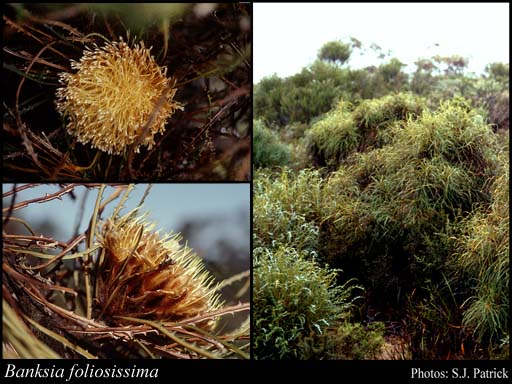- Conservation Code
- Priority Four
- Naturalised Status
- Native to Western Australia
- Name Status
- Current
Dense, erect, non-lignotubeorus shrub, 1-2(-3) m high. Fl. yellow, May or Aug. Gravelly sand or sandy clay over laterite. Hill top & upper slopes.

Scientific Description
Shrubs, 1-2 m high; branchlets hairy. Leaves petiolate, alternate, 125-420 mm long, 4-10 mm wide, hairy; petiole 20-55 mm long; lamina flat, once divided, pinnately divided, divided to the midrib, with 28-38 lobes on each side, the margins recurved. Inflorescences tomentose (with matted or tangled, soft, woolly hairs) or villous (with soft, shaggy, weak and straight hairs), yellow; innermost bracts 14-17 mm long, hairy. Perianth 27-30 mm long, hairy, all over, limb apex silky (with soft, shiny and appressed hairs), without awns; pistil 26-35 mm long, curved, style hairy. Follicles hairy, tomentose (with matted or tangled, soft, woolly hairs), obovate, 18-21 mm long. Flowers in June or July. Occurs in the South-west (SW) Botanical Province(s), in the Avon Wheatbelt (AW), Mallee (MAL) or Esperance Plains (ESP) IBRA subregion(s). : Conservation code Priority Four (P4).
Distribution
- IBRA Regions
- Avon Wheatbelt, Esperance Plains, Mallee.
- IBRA Subregions
- Fitzgerald, Katanning, Western Mallee.
- Local Government Areas (LGAs)
- Dumbleyung, Kent, Ravensthorpe.